Between climbing and hiking, Via Ferrata is a mountain sport that is practiced on rock faces equipped with bars and ladders. It is therefore safer and allows access to a wider public than climbing.
The Via Ferrata in Thônes
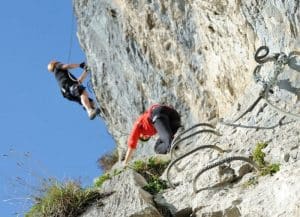
The beginning is rather easy but the rest is extremely difficult and requires great sporting qualities.
The exposure being due south, it is necessary to take something to hydrate during the effort and to avoid the hottest hours of the day.
The change of cable section takes place in the middle of overhangs, which is an additional difficulty. The end of the route allows for two variations: the easiest is to use a ladder turned around to face the void. The other option is to climb up a slope using your biceps. A final effort through a section with fewer rungs and the return is made by de-escalating while being secured by the cable.
The start is at an altitude of 660 m, the difference in altitude is 235 m and the cable is 600 m long.
It is necessary to walk 10 MN to reach the start, the effort lasts 1 H 30 and the return is done in 30 MN.
The Via Ferrata of La Clusaz
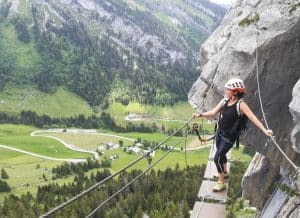
The Via Ferrata of Abondance
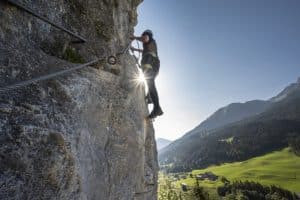
The Via Ferrata of the cave at Carret
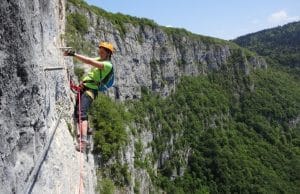
The departure is from the Doria aux Déserts car park for a 55-minute walk. The return journey is by the same route or by the Col de la Doria in 1 hour 55 minutes. The site is open all year round.
The Via Ferrata le P’tchi
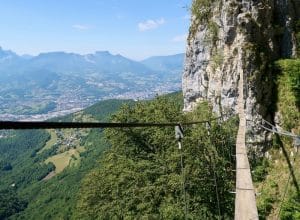
Private Via Ferrata
Many clubs and sports event organisers offer private Via Ferrata, which are much easier and have a very playful tyrolean section.
Generally speaking, this sport requires a good physical condition and consideration of the weather before embarking on it.
You can consult the videos of the different Via Ferrata, to know the main difficulties.
There are also many famous climbing sites near Annecy.
















